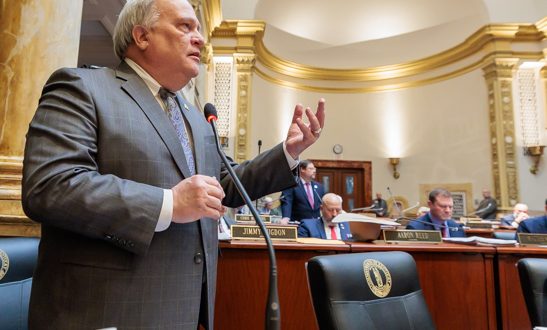Emerging sports are all the rage, aren’t they? They bring communities together, create jobs, and inject a whole lot of excitement into the local scene. But let’s be real, this kind of growth doesn’t just happen magically. It often involves public funding, and that’s where things can get a little tricky. After all, nobody wants to see their taxes skyrocket just so the town can host the next big pickleball tournament. So, how do state governments make sure that supporting these up-and-coming sports doesn’t become a burden on taxpayers? That’s the million-dollar question, and we’re about to dive in.
Understanding the Financial Landscape of Emerging Sports
Defining “Emerging Sports” and Their Economic Impact
First things first, what exactly do we mean by “emerging sports?” It’s not just the newest fad that pops up overnight. These are sports that are gaining popularity and recognition, often with a dedicated (and growing) fan base. Think of things like eSports, drone racing, or even some of the more niche extreme sports. Their economic impact can be significant. They can attract tourism, create local business opportunities, and generally boost the local economy. But, and it’s a big but, these benefits don’t come free.
Potential Tax Implications: A Closer Look
So, where do taxes come into play? Well, if a state or local government decides to invest in infrastructure to support these sports, like building a new eSports arena or a drone racing course (because that’s totally a thing), that money has to come from somewhere. And often, that “somewhere” is the taxpayer. It’s not always a direct tax increase, though. Sometimes it’s through reallocating existing funds, which can mean cuts to other services. It’s a balancing act, and let’s face it, not everyone is happy about it. You want to support the new BMX park, but not at the expense of the library budget, right?
Legislative Strategies to Mitigate Tax Burdens
Public-Private Partnerships: Sharing the Risk and Reward
One popular way to ease the tax burden is through public-private partnerships (PPPs). Basically, the government teams up with private companies to fund and manage these projects. The idea is that the private sector brings in the capital and expertise, while the public sector provides the land or regulatory support. It’s supposed to be a win-win, but it can get complicated. Who gets what share of the profits? Who’s responsible if things go south? These are the kinds of questions that legislators have to wrestle with.
Creative Funding Models: Beyond Traditional Tax Revenue
Tax revenue isn’t the only game in town. Some states are exploring creative funding models like special event taxes (a small tax on tickets or merchandise at sporting events), sponsorships, and even crowdfunding. Imagine a scenario where the local community directly invests in their new favorite sport—pretty cool, right? The key is finding revenue streams that are directly tied to the sport itself, so the people who benefit most are also the ones contributing.
Tax Increment Financing (TIF) and Its Role in Sports Development
Tax Increment Financing (TIF) is another tool that can be used. Basically, it works by earmarking the increased tax revenue generated by a new development (like a sports complex) to pay for the project itself. The idea is that the development wouldn’t have happened without the initial investment, so it’s okay to use the increased tax revenue to pay for it. It can be a bit controversial, though, as some argue that it diverts funds from other important services. But if it’s done right, it can be a game-changer (pun intended!).
Case Studies: Successful Tax-Conscious Approaches
Examining Innovative Legislation in Different States
Different states are trying different things, and some are seeing more success than others. For instance, some states have passed legislation that caps the amount of public funding that can be used for sports facilities, forcing developers to seek private investment. Others have created special tax districts around sports venues, where the increased property taxes are used to fund infrastructure improvements. There’s no one-size-fits-all solution, of course, but looking at what’s working (and what isn’t) in other states can be incredibly valuable.
Analyzing the Long-Term Economic Impact of These Strategies
The real test of any funding strategy is its long-term economic impact. Does it actually generate the revenue and jobs that were promised? Does it improve the quality of life for residents? Or does it just leave the state with a pile of debt and a half-empty stadium? Legislators need to carefully analyze the potential long-term consequences of their decisions. It’s not enough to just look at the short-term benefits. You have to think about the future.
Challenges and Considerations for Legislators
Balancing Public Good with Private Investment
Legislators are constantly walking a tightrope, balancing the public good with the needs of private investors. On one hand, you want to attract private investment to boost the local economy. On the other hand, you don’t want to give away the farm or allow private companies to profit at the expense of taxpayers. It’s a delicate balancing act, and it requires careful negotiation and oversight.
Addressing Concerns About Transparency and Accountability
Transparency and accountability are key. The public has a right to know how their money is being spent, and they need to be able to hold their elected officials accountable. That means open meetings, detailed financial reports, and independent audits. The more transparent the process, the more likely the public is to support it. It seems pretty obvious, but you’d be surprised how often this gets overlooked.
The Role of Community Input in Decision-Making
Don’t forget the community! It’s easy for legislators to get caught up in the details of budgets and contracts, but it’s important to remember that these decisions affect real people. Community input is crucial. Holding town hall meetings, conducting surveys, and creating advisory boards can help ensure that the public’s voice is heard. After all, it’s their community, and they should have a say in how it’s developed.
The Future of Funding Emerging Sports
Exploring New Technologies and Revenue Streams
The world is constantly changing, and that includes the world of sports finance. New technologies like blockchain and cryptocurrency could offer new ways to fund sports projects. Think about it: tokenized stadium bonds or fan-owned sports teams. The possibilities are endless. It’s easy to dismiss these ideas as futuristic pipe dreams, but the future is coming faster than you think.
Adapting to Changing Economic Realities
Economic conditions are always in flux, and legislators need to be prepared to adapt. A funding model that works well in a booming economy might not be sustainable during a recession. Being flexible and having contingency plans in place is essential. You never know what’s around the corner, and you don’t want to be caught off guard.
Ensuring Equitable Access and Opportunity for All
Finally, it’s crucial to ensure that everyone has access to the benefits of emerging sports. It’s not enough to just build a fancy new stadium. You also need to make sure that low-income residents have access to affordable tickets, that local businesses have opportunities to participate, and that the benefits are shared broadly across the community. It’s about creating a thriving sports ecosystem that benefits everyone, not just a select few.
So, there you have it. Navigating the financial landscape of emerging sports is no easy feat, but by using a combination of creative funding models, public-private partnerships, and a healthy dose of transparency and community input, legislators can ensure that these exciting new ventures don’t become a burden on taxpayers. It’s all about finding that sweet spot where sports and fiscal responsibility can coexist. Now, wouldn’t that be a win for everyone? Maybe it’s time to start paying attention to your local government meetings—you might be surprised at what you learn.
 Cloudabouts
Cloudabouts




